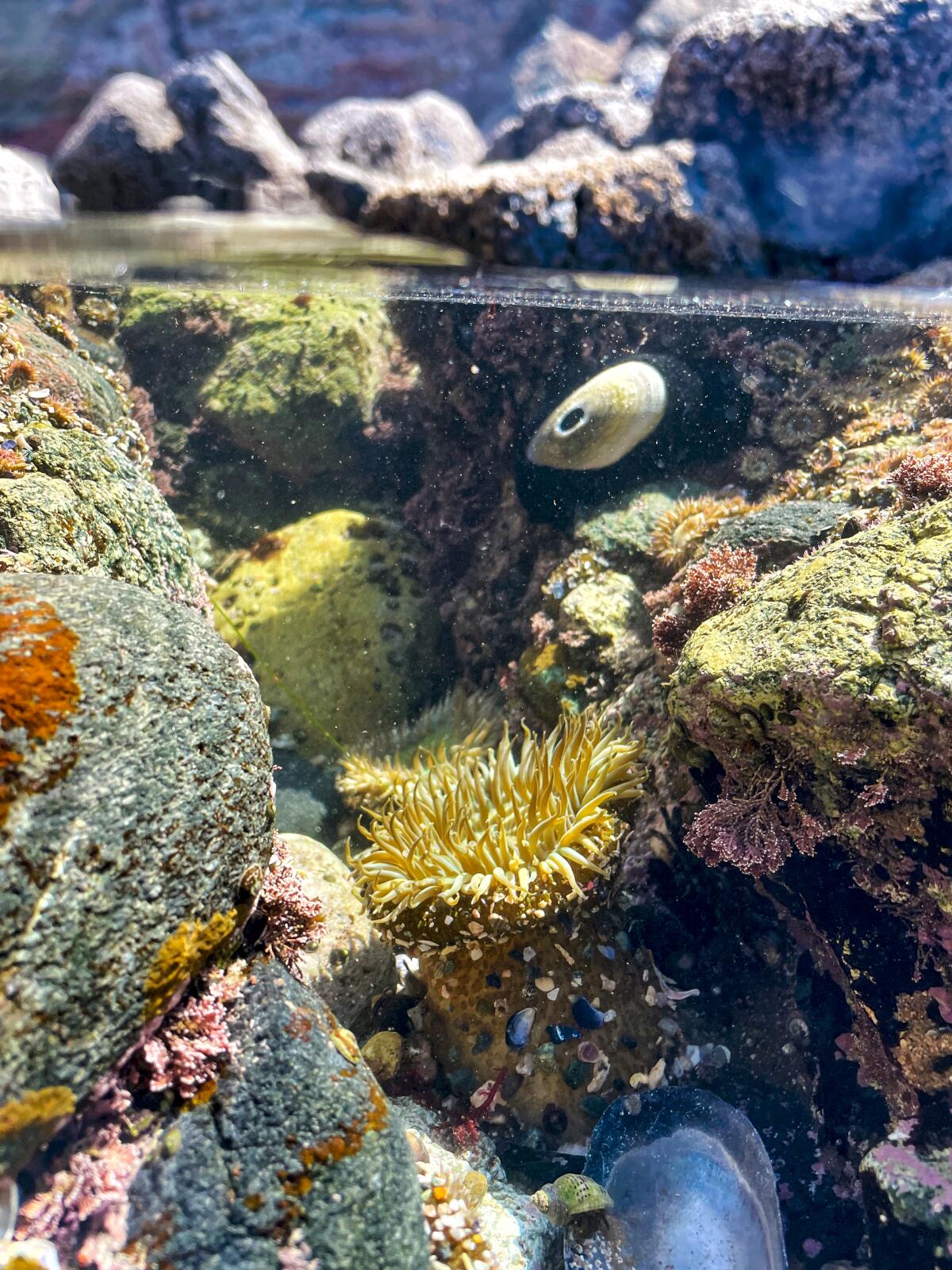
8 SoCal tide pools to view magical sea life this weekend
Of all the remarkable things about tide pools, No. 1 on the list has to be this: Each visit offers an opportunity to observe something new. Will an octopus peek out from under a rock? Will warty sea cucumbers be squirming around the sea floor? Will a giant green anemone appear in all its giant green glory? You’ll have to go and find out.
While it’s impossible to know exactly what you’ll see in the rocky intertidal coves and nooks of the Southern California coastline on a given day, there are some mainstays: mussels upon mussels, hermit crabs (a perennial childhood favorite), barnacles, striped shore crabs, anemone, snails and tiny fish. Unlike at an aquarium, you’re watching the animals adapt in real time under real-world conditions, whether they’re looking for their next meal or trying to stay safe from predators. It’s a thrill whether you’re a third-grader on a field trip or an adult looking for a weekend adventure. (I can’t imagine anyone seeing an anemone swallowing a foot-long spiny lobster and thinking, “Eh.”)
As a coastal explorer, I’ve found there are two strategies to discover the tide pools: Cover a great distance or sit for long periods at a good pool and wait for the sea life to move about. For the best experience, do a little of both. Make sure to wear sturdy shoes — the rocks can be simultaneously sharp and slippery.
Before heading out, check the tides and arrive about an hour before the lowest tide. That way you have time to wander without worrying about the rising water. You can also download an app like Tide Alert (NOAA) and set up alerts for low-tide events every day.
Lastly, remember to look but not touch, and definitely don’t remove any of the sea life you find in the tide pools. That threatens the sensitive ecosystem and is strictly prohibited.
The best beaches to view tide pools are ones that contain lots of rocks, weather-worn boulders and abundant sea life. Here are eight can’t-miss favorites to explore this summer. By the way, if you think they are wonderful this time of year (and they certainly are), revisit them in December and January when the tides are at their lowest.
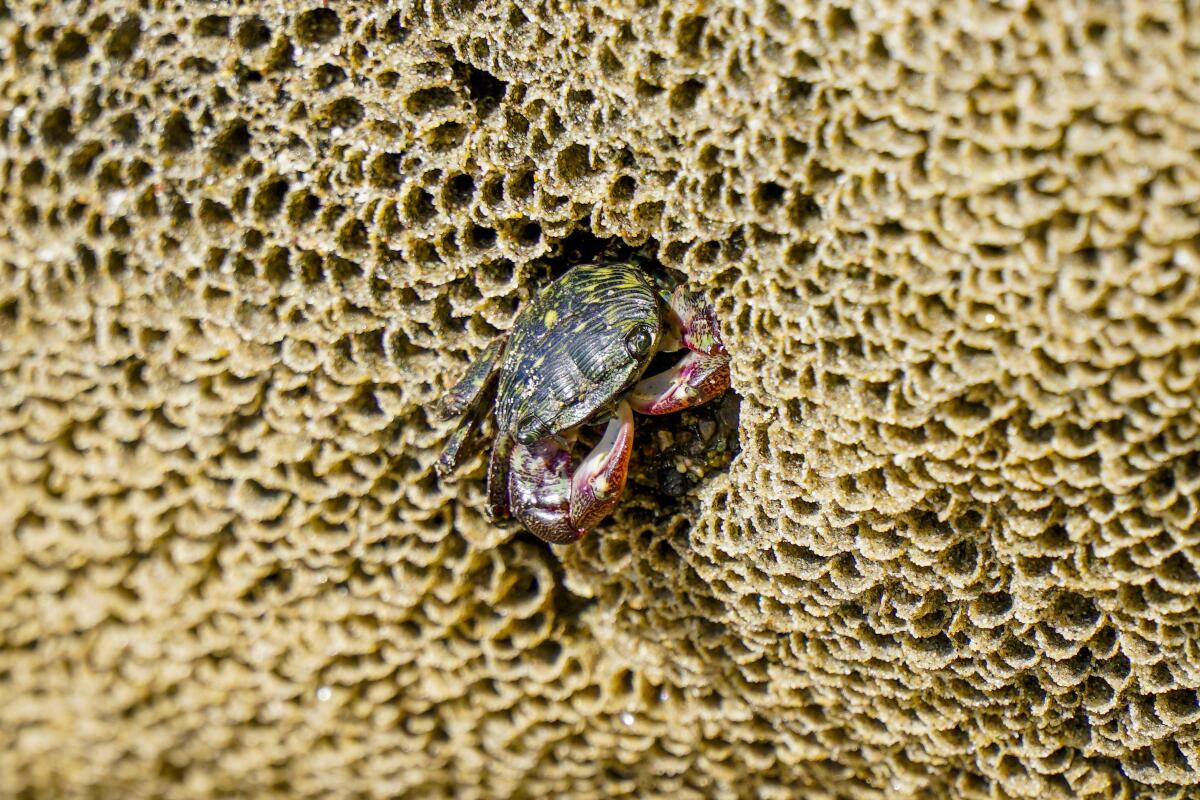
El Matador Beach
When first landing on the beach, ignore the hordes of photographers (and their human subjects) and walk to the north end for the caves and tide pools. There are several steep stairs and paths to climb down to get to this beach, so it may not be suitable for everyone.
Bonus tip: After tide-pooling, take a 15-minute drive south to Malibu Seafood for fried clams, fish sandwiches and chowder.
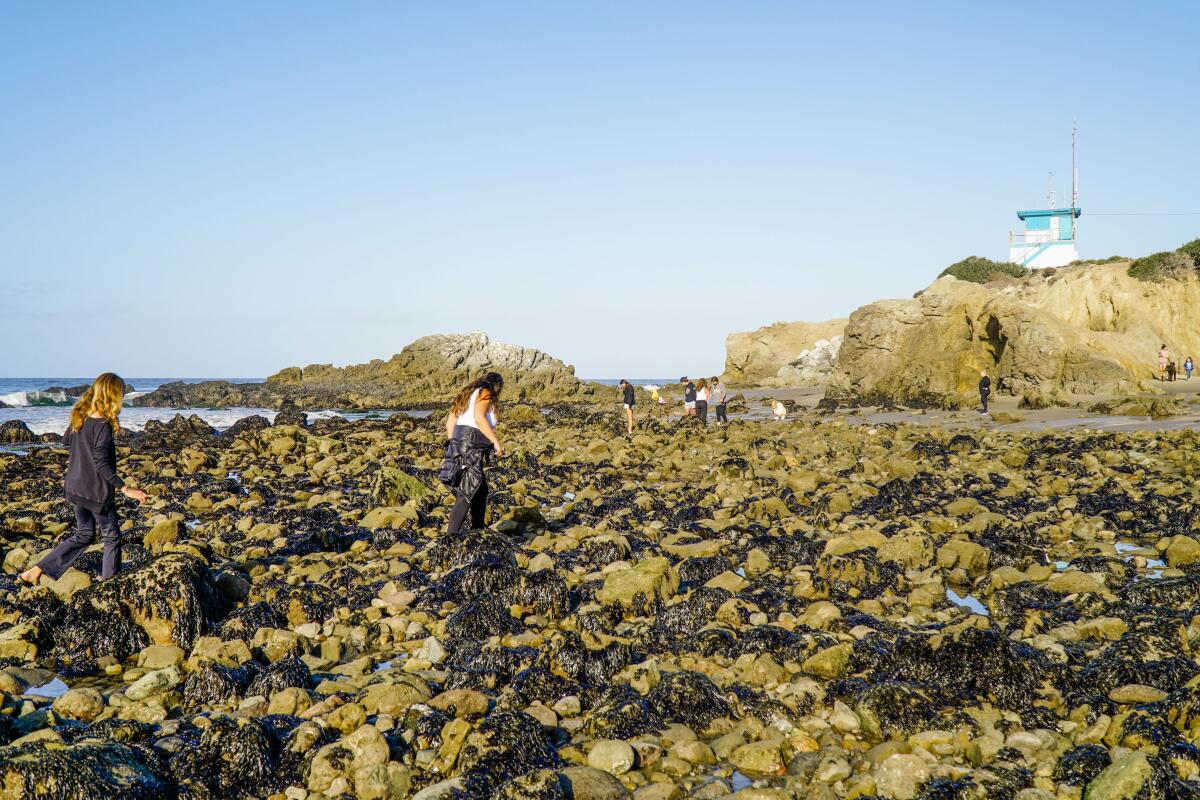
Leo Carrillo State Beach
The tide pools are made up of hundreds of small, pewter-colored boulders. As the waves come in, water gets trapped between the rocks, allowing for optimal sea life viewing. Here you can see the usual mussels, crabs and barnacles but also starfish, cowrie snails and California spiny lobsters.
There are no stairs to climb, which makes Leo Carrillo one of the more accessible options. The tide pools are close to the entrance of this beach, which is right off the road.
Parking is $3 per hour or $12 for the day. There is also limited free parking on PCH.
Bonus tip: Extend your tide-pooling adventures by camping at the park. For a no-hassle experience, reserve a campsite at the park, then rent an RV from Camping Adventures, which will have your camper parked and all hooked up for your arrival.
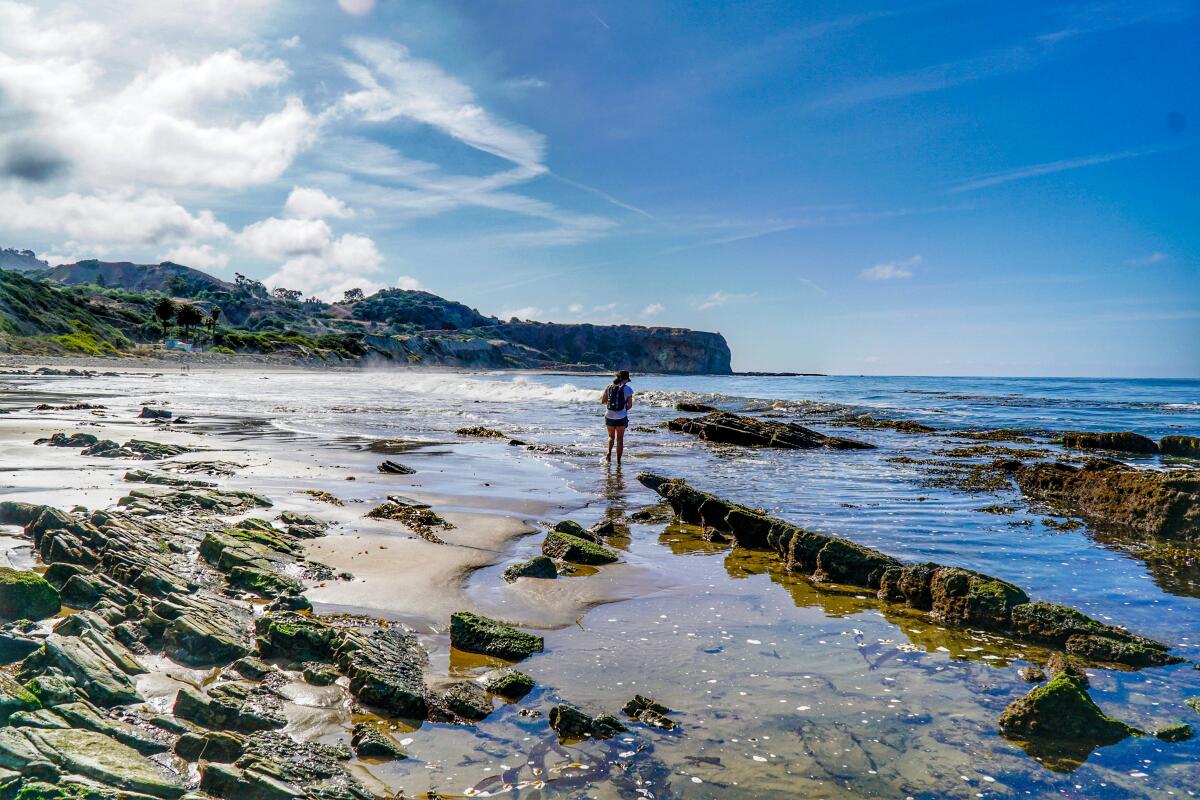
Abalone Cove Shoreline Park
It’s about a 10-minute walk to the beach down a fairly steep dirt path, so Abalone Cove may not be ideal for families with small children. Once at the beach, head south toward the cliff. There are no longer many sea stars here — blame years of sea star wasting syndrome, the mysterious disease that has been killing sea stars from Alaska to Mexico — but it is possible to see all the other usual suspects: sea hares, urchins, hermit crabs, shrimp, snails and perhaps even an octopus.
Note that portions of the beach and tide pool areas are closed due to falling rocks and unstable cliffs. Check the city’s website for updates. There is a paid parking lot right off Palos Verdes Drive South.
Bonus tip: Don’t miss the unique and stunning Wayfarers Chapel, designed by Lloyd Wright (son of legendary Frank Lloyd Wright), perched on a hill above Abalone Cove. It’s nearly all glass with views of the surrounding trees and shore below.
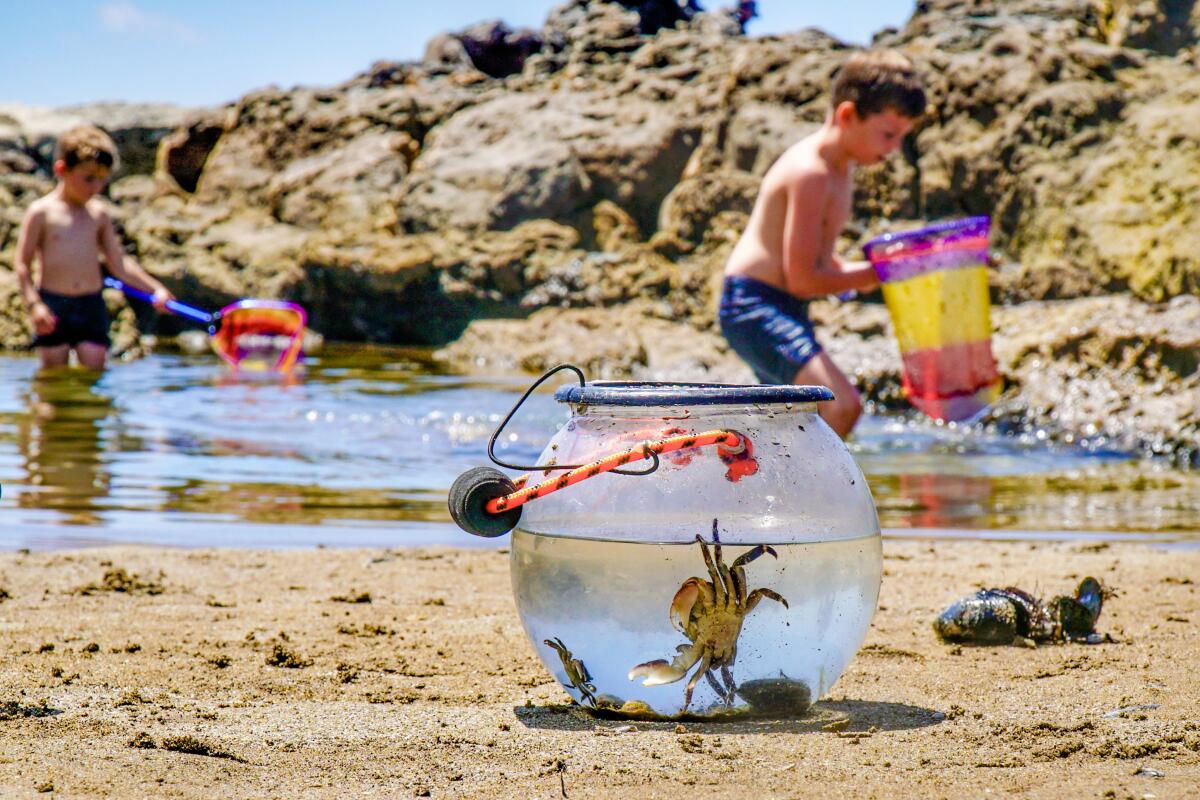
White Point Beach
Before you go, learn about the area’s past as a Japanese abalone fishing village and later as a popular beach resort featuring a sulfur hot spring. Remnants of the hotel foundation are still visible near the rocky shore, and during low tide, you might even catch a whiff of sulfur. (Hint: It smells like rotten eggs.)
It’s $10 for all-day parking. At the bottom of Kay Fiorentino Drive, turn left and head south to park closest to the tide pool area.
Bonus tip: If you’re into military history and want to learn more about how the ports were secured, visit the Fort MacArthur Museum. It’s open Tuesday, Thursday, Saturday and Sunday from noon to 5 p.m.
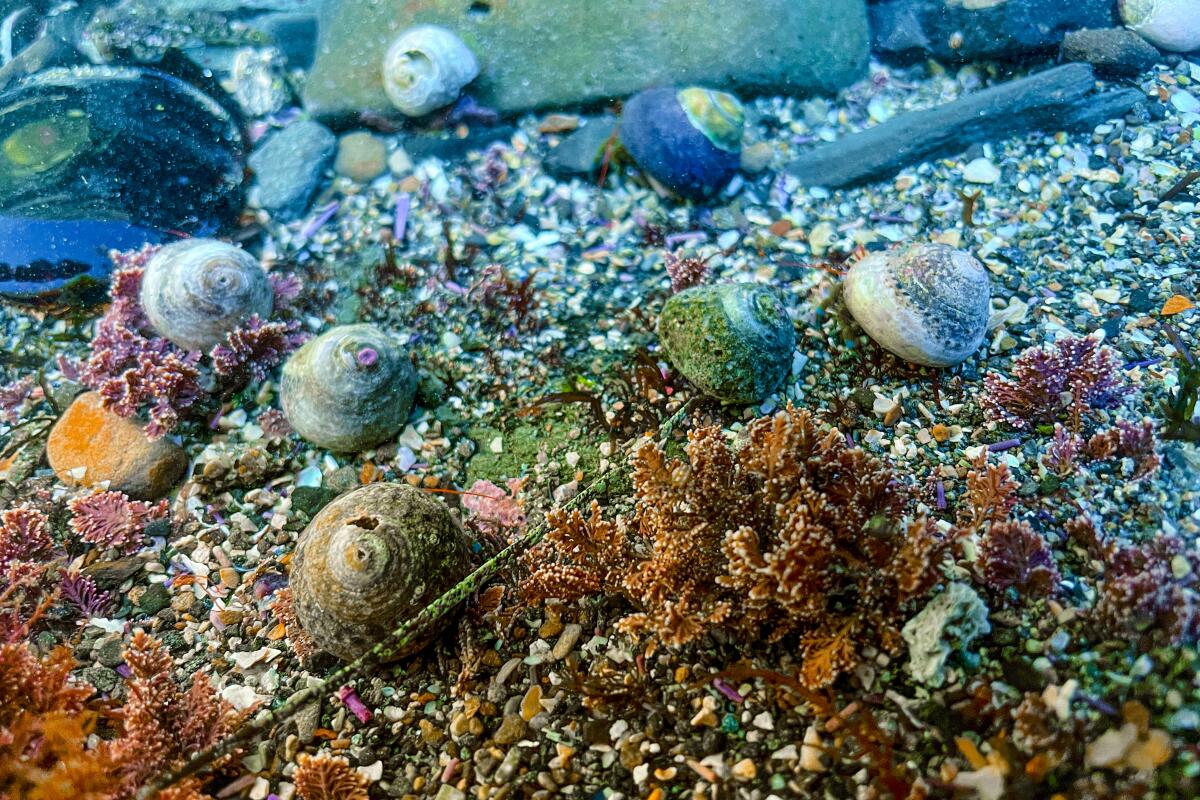
Point Fermin Park Beach
To access the tide pools, go to the north end of the beach to a boardwalk surrounded by a chain-link fence. Long and deep pools harbor crabs, anemone, hundreds of snails, purple sea urchin, hermit crabs and … golf balls. Yes, golf balls. Apparently, someone enjoys hitting balls off the high-above bluffs. (Note: Please don’t.)
Ample parking is available in a paid lot for $1 per hour ($9 max). Near the lot is a bathhouse with showers and toilets.
Bonus tip: Stop by the Point Fermin Lighthouse or the Cabrillo Marine Aquarium, or just hang out at the beach for a full day of fun.
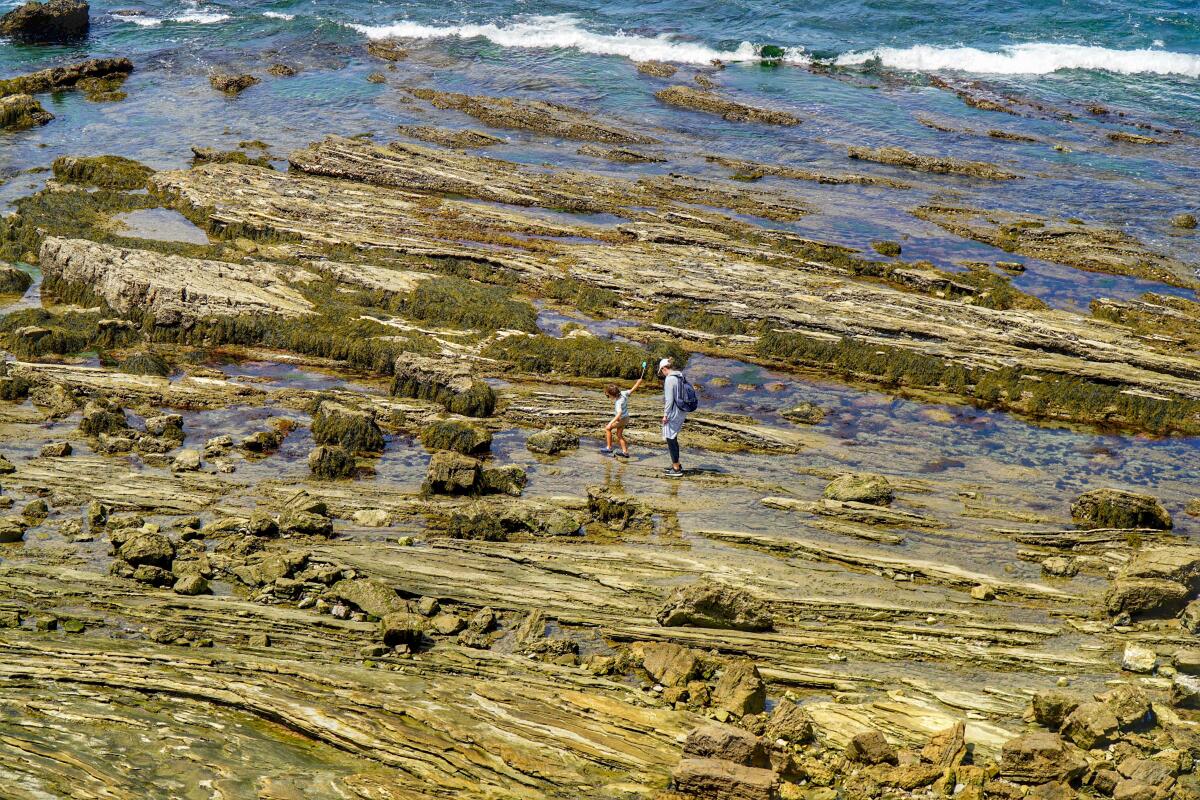
Crystal Cove State Park
There are also tide pools in the historic district, starting south of the famed Crystal Cove cottages. To get to those, park in the Los Trancos lot. It’s a 10-minute walk down to the beach, but there is also a shuttle. Beach wheelchairs are available as well.
The list of possible sea life visible in Crystal Cove is wide-ranging and includes octopuses, beautiful blue By-the-Wind Sailor jellyfish, tide pool sculpins and giant anemones.
You can park in various lots in the area for $5 an hour or $15 a day. Consult the map to find tide pool options.
Bonus tip: While exploring the tide pools, put your name down at the Beachcomber, the historic seaside bungalow that doubles as an oceanfront restaurant. (Extra bonus: You can get validated parking for three hours.) If the wait is too long, walk up the stairs and visit Ruby’s Shake Shack. While enjoying a date shake and a cheeseburger, you can watch for whales down below.
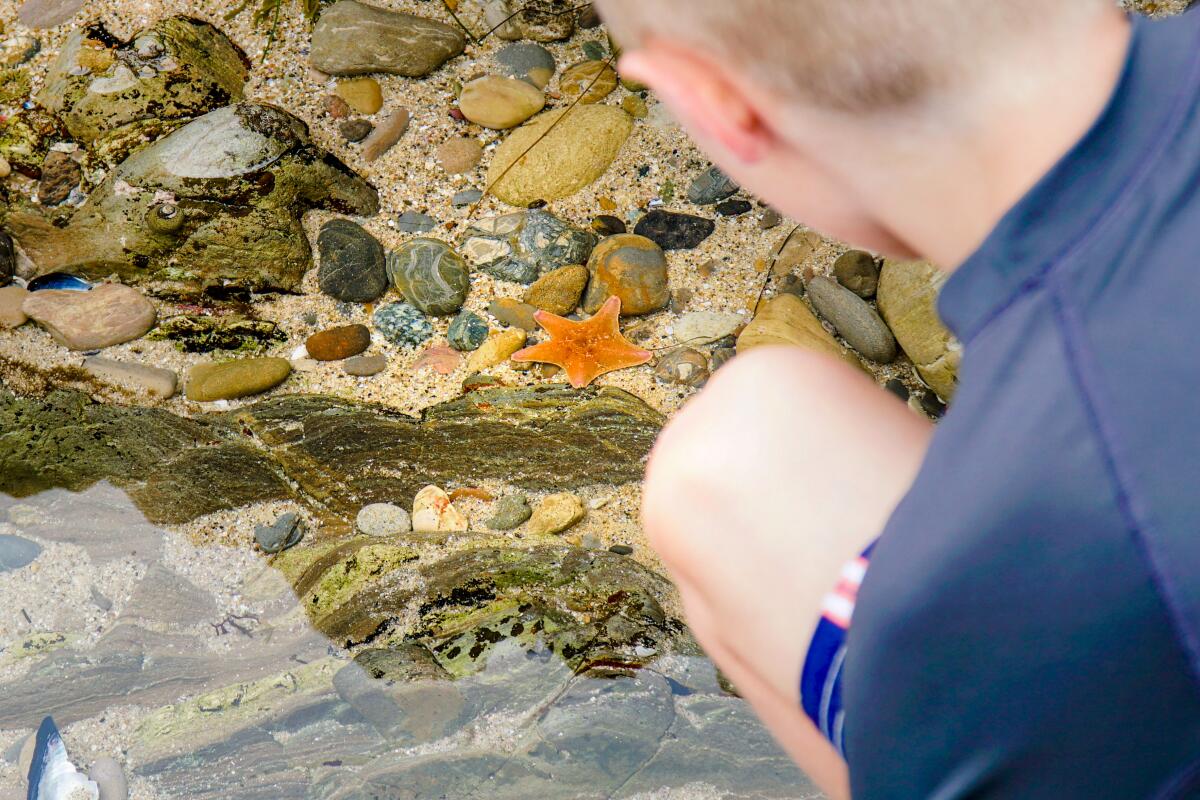
Little Corona del Mar Beach
You’ll have to park on the street — a significant downside of this beach — but a paved path at the intersection of Ocean Road and Poppy Avenue takes you straight down to the action. Tide pools are on both ends of the beach.
Bonus tip: Grab a hand-dipped, chocolate-covered ice cream bar or frozen banana at Sugar ’n’ Spice on Balboa Island. Then take the auto ferry to the Balboa Peninsula Fun Zone for rides and games.
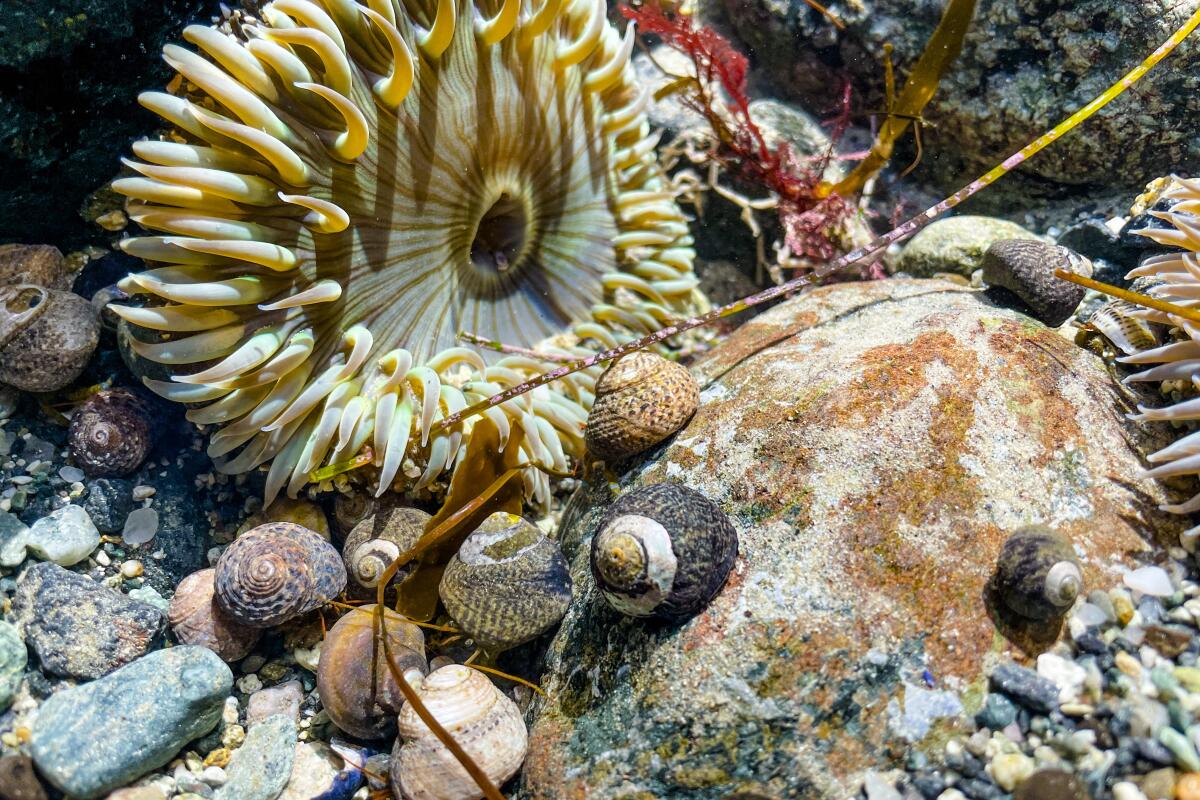
Dana Point via Ocean Institute
To get to the tide pools, park for free at the Ocean Institute and then walk behind the building to find the stairs surrounded by chain-link fence. Once on the beach, walk north until you reach the tide pools formed by thousands of rocks. You’ll walk for 20 minutes down the tide pools (they’re that big) until you run into flat shelf rocks with all genres of sea life.
Bonus tip: For a full day of fun, visit the Ocean Institute, then walk over to Baby Beach for the safest place for little ones to swim. Rent a paddleboard to see the local sea lions and finish up the day with an ice cream at the Scoop Deck.
Sign up for This Evening's Big Stories
Catch up on the day with the 7 biggest L.A. Times stories in your inbox every weekday evening.
You may occasionally receive promotional content from the Los Angeles Times.



